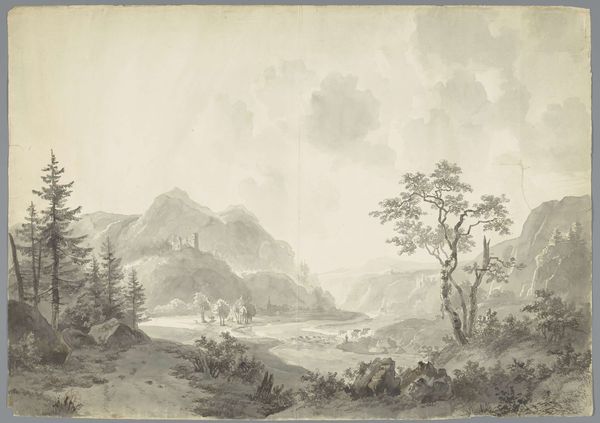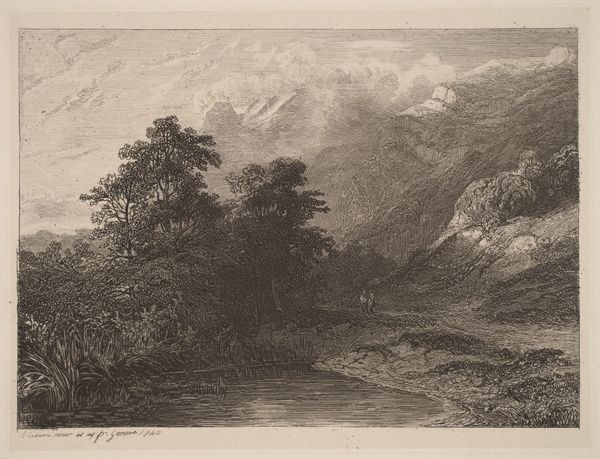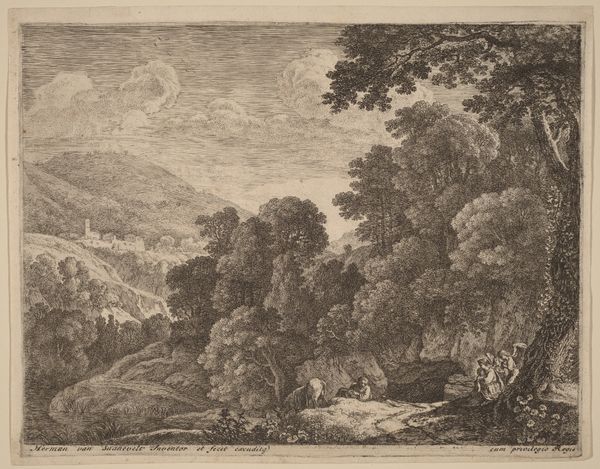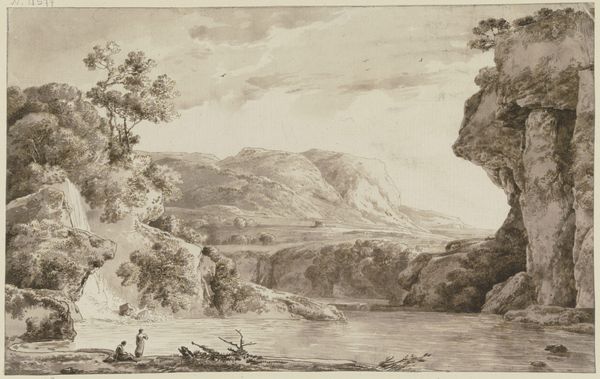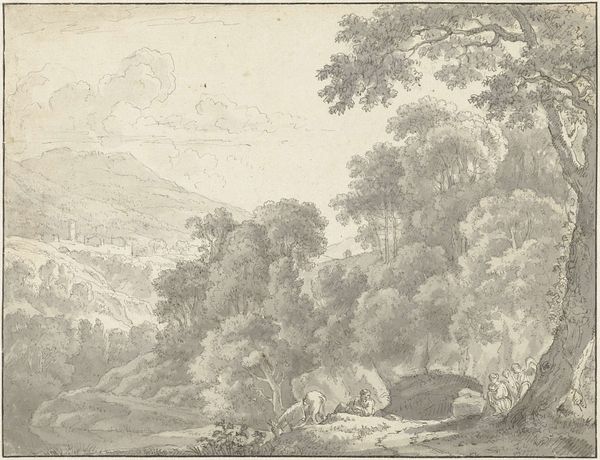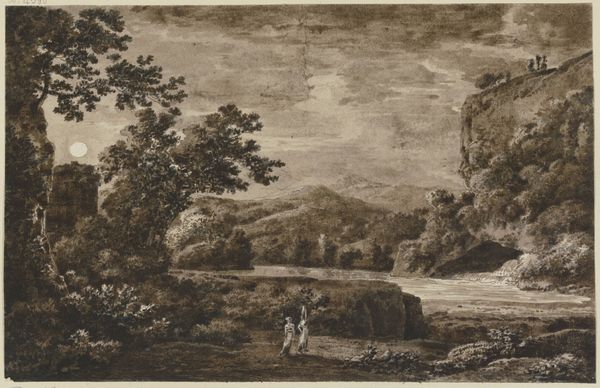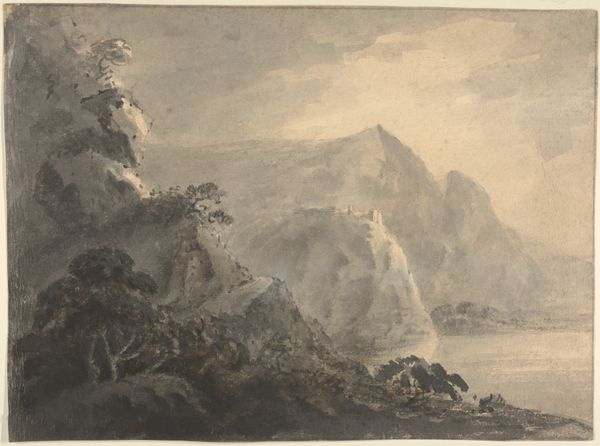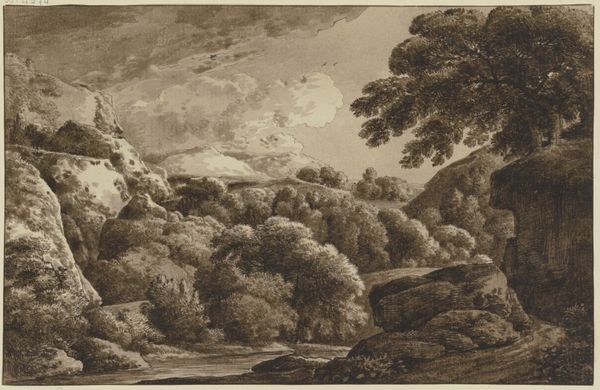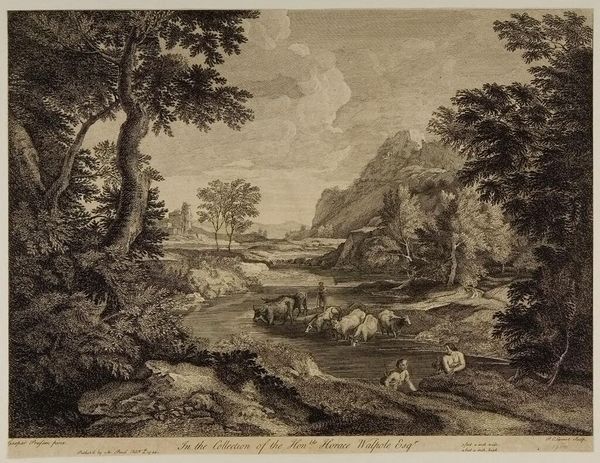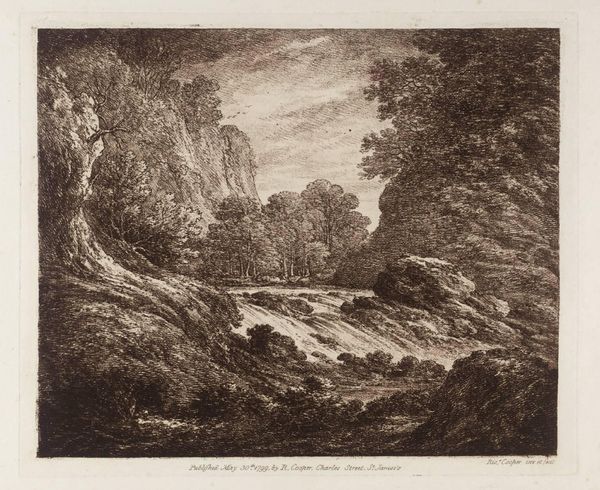
Moonlit Landscape with a River and Castle c. 1770 - 1778
0:00
0:00
Dimensions: sheet: 31.4 × 44.6 cm (12 3/8 × 17 9/16 in.)
Copyright: National Gallery of Art: CC0 1.0
Editor: Here we have Simon Mathurin Lantara’s "Moonlit Landscape with a River and Castle," dating from around 1770-1778, created using tempera and drawing. The muted tones give the piece an air of mystery. What symbolic language do you find working within this piece? Curator: The most immediate symbol is, of course, the moon. Across cultures, the moon signifies cycles, the passage of time, but also the feminine and the subconscious. Given the Romantic era's fascination with nature and emotion, it wouldn’t be a stretch to see the moon here as a reflection of inner states, especially melancholy. Does the castle perched so precariously offer any insights? Editor: Maybe the castle, in contrast to the moon's fluidity, represents something more grounded and historical? I read somewhere the ruins can speak of lost grandeur, prompting reflections on time's passage and fate. Curator: Precisely. But also, the light! Lantara employs chiaroscuro—the dramatic contrast between light and dark—not merely to depict a scene, but to heighten its emotional impact. Notice how the moonlight selectively illuminates certain areas, obscuring others. What emotional register does this use of light evoke for you? Editor: I feel like that kind of shadowy, obscured atmosphere conveys both serenity and vulnerability; it’s beautiful, but almost melancholic. It makes me wonder what specific feeling Lantara wanted viewers to connect with. Curator: Perhaps a yearning for something just beyond grasp. Do you notice anything repeated in the artwork’s structure that could support that idea? Editor: Maybe the curves that mark the shape of the clouds? Like waves, echoing into the distance. It feels endless. The image, initially simple, feels increasingly complex the longer I engage with it. Curator: Exactly! And in that, lies the enduring power of symbols; multiple layers and varied meaning constantly unfolding, revealing new interpretations each time you meet an artwork.
Comments
No comments
Be the first to comment and join the conversation on the ultimate creative platform.
